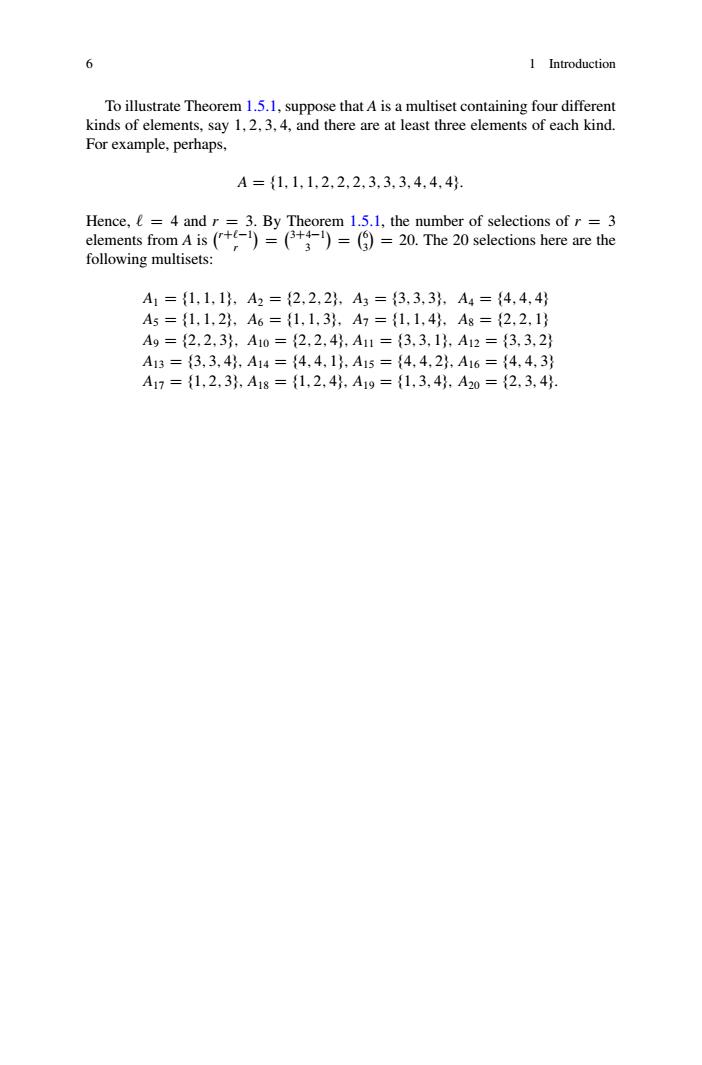正在加载图片...

6 I Introduction rate heorem.suppose thatsmultistonta kinds of ele ents sav 123.4 elements of each kind For example,perhaps. A={1,1,1,2,2,2,333.4.4.4 骨e2 following multisets: A1={1,1,1,A2=2,2,2.A3={3,3,3.A4={4,4,4 A5={1,1,2,A6={1,1,3,A7={1,1,4,A8={2,2,1 Ag={2,2.3,A10={2.2.4},A11={3,3.1h,A12={3,3,2} A3={3,3,4.A14={4,4.1A15={4,4,2头,A16={4,4,3} A7={1,2,3头A18={1,2.4.A19={1,3,4.A20=2,3,4}6 1 Introduction To illustrate Theorem 1.5.1, suppose that A is a multiset containing four different kinds of elements, say 1; 2; 3; 4, and there are at least three elements of each kind. For example, perhaps, A D f1; 1; 1; 2; 2; 2; 3; 3; 3; 4; 4; 4g: Hence, ` D 4 and r D 3. By Theorem 1.5.1, the number of selections of r D 3 elements from A is rC`1 r D 3C41 3 D 6 3 D 20. The 20 selections here are the following multisets: A1 D f1; 1; 1g; A2 D f2; 2; 2g; A3 D f3; 3; 3g; A4 D f4; 4; 4g A5 D f1; 1; 2g; A6 D f1; 1; 3g; A7 D f1; 1; 4g; A8 D f2; 2; 1g A9 D f2; 2; 3g; A10 D f2; 2; 4g; A11 D f3; 3; 1g; A12 D f3; 3; 2g A13 D f3; 3; 4g; A14 D f4; 4; 1g; A15 D f4; 4; 2g; A16 D f4; 4; 3g A17 D f1; 2; 3g; A18 D f1; 2; 4g; A19 D f1; 3; 4g; A20 D f2; 3; 4g:��